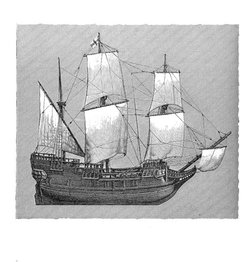Plymouth Colony
|
|
The first governing document of the colony was the Mayflower Compact, drafted and ratified by the first group of colonists aboard their ship, the Mayflower, as it lay off-shore. On December 21, 1620, 102 Pilgrims from the Mayflower landed at Plymouth Rock on the western shore of Cape Cod Bay in southeastern Massachusetts.
The first settlement of the colony was New Plymouth, later Plymouth, Massachusetts. By the end of that winter almost half of the settlers were dead, including their leader John Carver. Thus began one of the best-intended, historically renowned, and yet strangely ill-fated colonial ventures in America. When the Massachusetts Bay Colony got its new charter in 1691, Plymouth ended its history as a separate colony.
William Bradford became governor in 1621 on the death of Carver, served for eleven consecutive years, and was elected to various other terms until his death in 1657. The patent of Plymouth Colony was surrendered by Bradford to The Freemen in 1640, minus a small reserve of three tracts of land. On March 22, 1621, the Pilgrims of Plymouth Colony signed a peace treaty with Massasoit of the Wampanoags.
The colony contained roughly what is now Bristol County, Plymouth County, and Barnstable County, Massachusetts.

